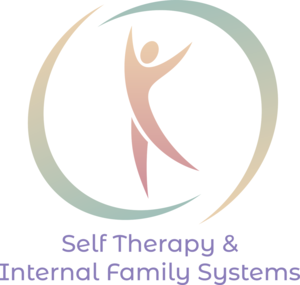Panic attacks can be overwhelming and distressing experiences, causing intense physical and emotional symptoms. Internal Family Systems (IFS) therapy offers a valuable approach to understanding and managing panic attacks by exploring the underlying emotions and internal dynamics. In this blog post, we will discuss how to use IFS techniques during a panic attack to foster self-awareness, self-compassion, and ultimately find relief and healing.
Recognize and Externalize Panic Parts: During a panic attack, it is important to acknowledge the presence of different parts within yourself that contribute to the experience. In other words, these parts are trying to deliver a message to your. The message may manifest as intense fear, rapid heartbeat, shortness of breath, or racing thoughts. By externalizing these parts, you can create some distance between your core Self and the panic-inducing parts, allowing for increased self-awareness and observation.
Connect with your Calm Self: Even during a panic attack, it is possible to connect with your calm, grounded Self. This Self remains calm, curious and compassionate, providing a sense of reassurance and safety for you in any moment. Practice grounding techniques such as deep breathing, focusing on your senses, or repeating affirmations that promote relaxation and self-compassion. By intentionally accessing your calm Self, you can counterbalance the overwhelming sensations of a panic attack. However, when a panic attack takes over, it can be hard to bring yourself back to a place of calm, curious and compassionate. Therefore, it is important to practice connecting with Self outside the moment of panic, so that there is familiarity with Self as an anchor point already established.
Engage in Internal Dialogue: One way to recenter in Self is to activate self-awareness by doing a body scan. While passing your awareness over different parts of your body, head to toe, you can ask yourself.
- What activated?
- What do I feel?
- Where is the discomfort in my body?
Once you have established a connection with your calm Self, initiate an internal dialogue with the parts contributing to the panic attack. Approach these parts with curiosity and compassion, aiming to understand their intentions and concerns. Ask questions such as: “What are you trying to protect me from?” or “What do you need from me in this moment?” This dialogue encourages a compassionate exploration of the underlying emotions and experiences that trigger panic attacks.
Express Gratitude and Reassurance: While engaging in internal dialogue, express gratitude and reassurance to the parts that are trying to protect you. Recognize that their intentions are positive, even if their methods are causing distress. Assure them that you understand their role and that you are committed to finding more effective ways to address their concerns. This approach promotes a sense of unity and collaboration among your internal parts.
Practice Self-Compassion: During and after a panic attack, it is crucial to practice self-compassion. Remind yourself that experiencing a panic attack does not define your worth or strength. Embrace self-care activities such as gentle movement, journaling, or reaching out to a supportive person.
Seek Professional Support: While incorporating IFS techniques during a panic attack can be helpful, it is essential to remember that panic attacks can be complex and may require more support. Consider working with a qualified Internal Family Systems therapist or other trained professional.
Internal Family Systems (IFS) therapy provides a framework for navigating panic attacks with self-awareness, compassion, and healing. By recognizing and externalizing panic parts, connecting with your calm Self, engaging in internal dialogue, expressing gratitude and reassurance, practicing self-compassion, and seeking professional support when needed, you can effectively manage and reduce the impact of panic attacks. Remember that healing takes time and patience, and incorporating IFS techniques can be a valuable tool in your journey toward greater well-being.

